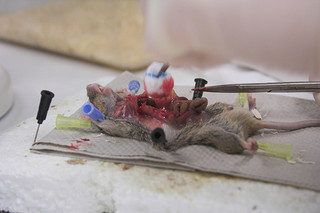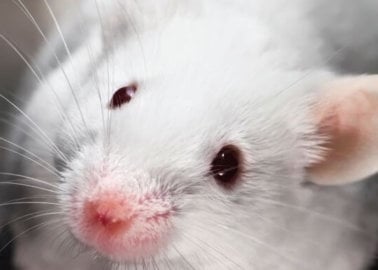The Real Health And Safety Issue In Animal Dissection
While a handful of backward-looking scientists are calling for a return to the days when pupils cut up dead animals, progressive educators know that these deadly exercises are a waste of lives, money and educational opportunities.
Almost all of the more than 40 comparative studies conducted on this topic have concluded that the learning outcomes of students who are taught using non-animal teaching methods such as interactive computer simulations are equivalent or superior to those of their peers who are taught using traditional animal-based methods.
Recent systematic reviews of these studies have shown that non-animal teaching methods improve students’ confidence, learning efficiency, examination results, preparedness for laboratory work and information-retrieval and communication abilities. These methods also benefit educators by increasing teaching efficiency and significantly lowering costs, which in these (and coming) times of austerity are major concerns to all educational establishments.
Any suggestion that students cannot learn the requisite material or develop a passion and talent for science without cutting open animals is short-sighted and simply not supported by evidence or common sense. The US’ National Science Teachers Association – the largest science education organisation in the world – amended its position statement in 2008 to endorse the use of alternatives to dissection and support teachers’ decisions to use alternatives.
Today, one can become a successful life scientist or a practicing doctor – even a surgeon – without ever cutting into a living or dead animal. In fact, the use of non-animal alternatives more accurately reflects what students will encounter should they decide to pursue careers in medicine. No British medical schools use live animals as part of the routine training of medical students, and the quality of our medics remains commendably high. If experience with cutting up dead animals were necessary to successfully undertake medical training, then it would be a prerequisite for entry into medical schools: it is not.
Basic ethics teaches us that if there are two ways to accomplish a goal – one that involves causing others harm and one that does not – the ethical decision is to choose not to do harm. Shouldn’t the life sciences be about life instead of death? While it’s easy to suggest that “health and safety” or “squeamishness” are responsible for the decrease in the use of animals’ bodies, the reality is that this old-fashioned technique simply doesn’t serve the needs of students and doesn’t mesh with the values that bring people into the life sciences.
We know that today’s students need – and want – to learn that life sciences are about living beings, not pickled and dissected specimens. Indeed, for many of them, the real health and safety issue at stake is the health and safety of the thousands of animals needlessly killed for dissection. There should be no return to the days when biology instruction put students off the study of life.
Perhaps those who complain about squeamishness and advocate more blood and guts on the laboratory bench are right that exposure to dissection at an early age can harden the sensibilities of some students. But are hard-hearted doctors and life scientists what we really want?




